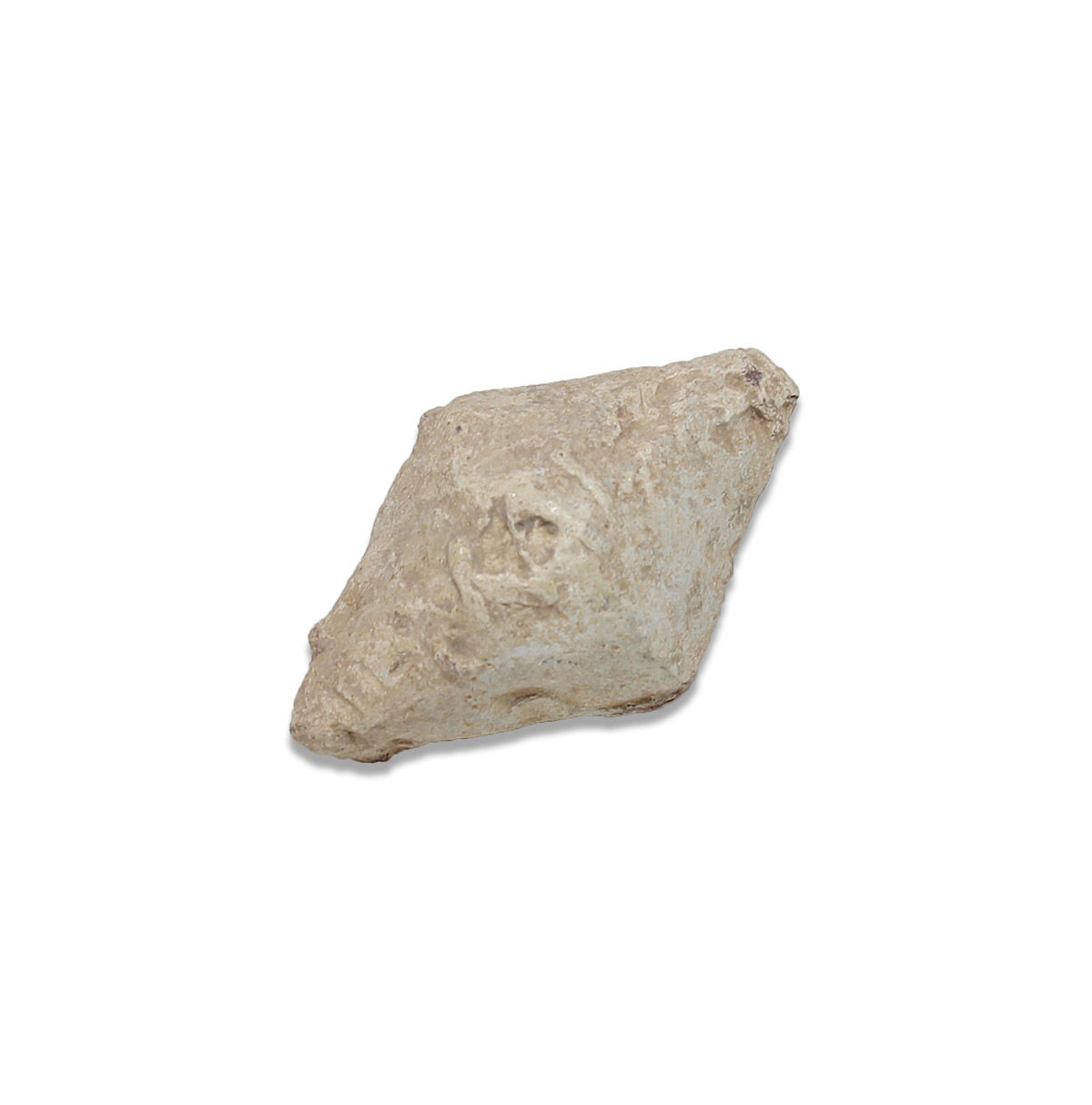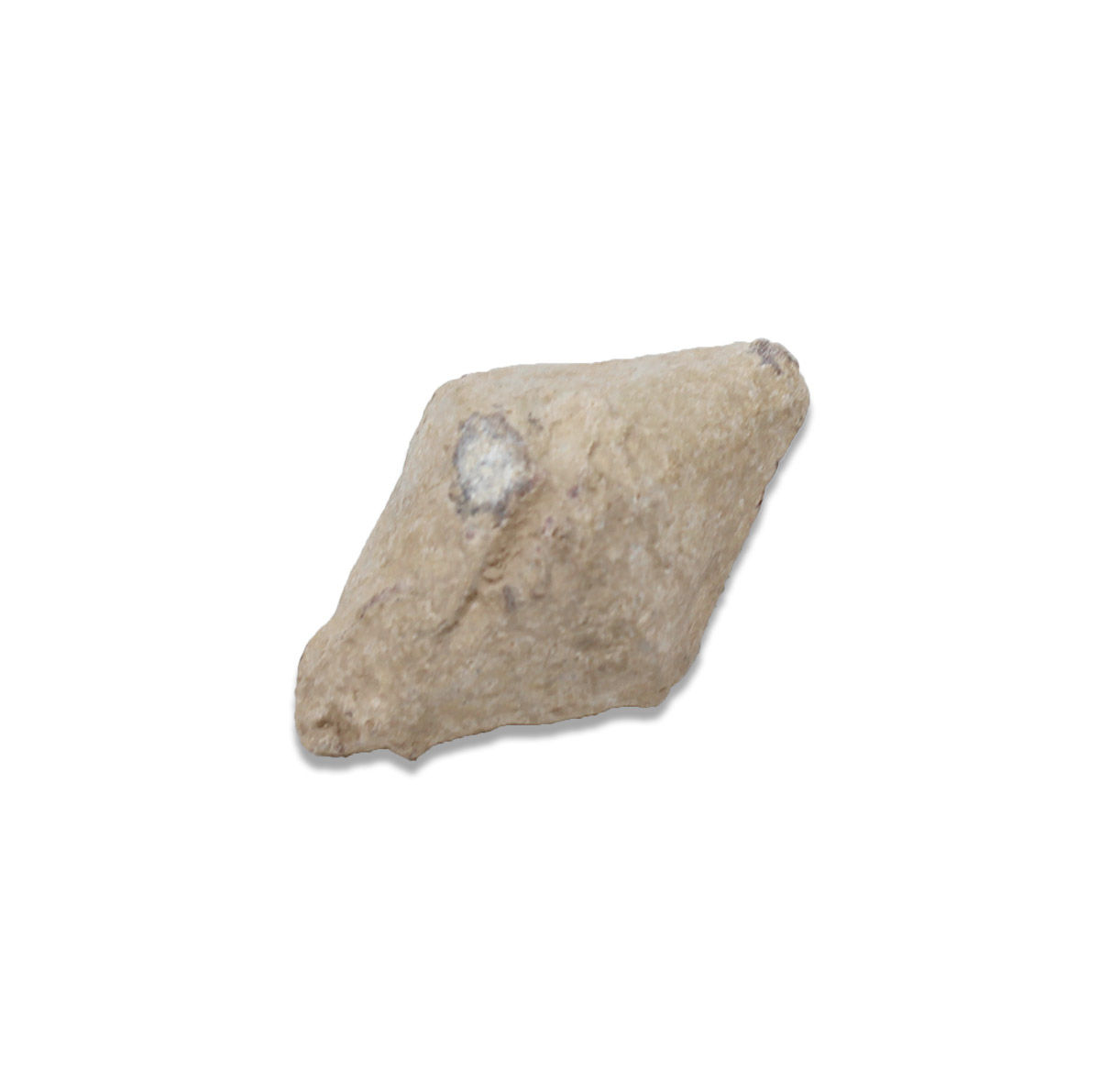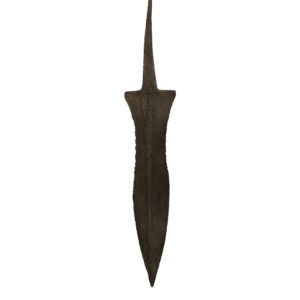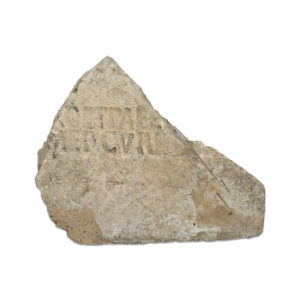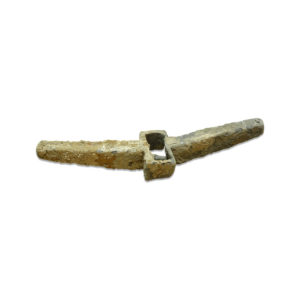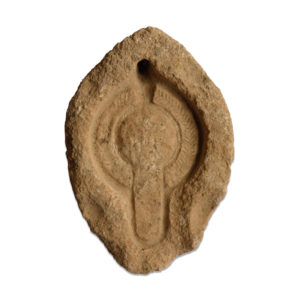Description
| ITEM | Slingshot with inscription ‘IMP’, Gnaeus Pompeius. |
| MATERIAL | Lead |
| CULTURE | Roman |
| PERIOD | 45 B.C |
| DIMENSIONS | 27 x 40 mm |
| CONDITION | Good condition |
| PROVENANCE | Ex Spanish private collection, acquired between 1960 – 1970 |
| BIBLIOGRAPHY | PINA POLO, FRANCISCO. & ZANIER, WERNER. Glandes inscriptae procedentes de la Hispania Ulterior (2006). p.32 |
Sling, implement for propelling missiles, one of the first missile weapons used in warfare. It consisted of a small strap or socket of leather to which two cords were attached. The warrior, or slinger, held the ends of the cords in one hand, placed the missile snugly in the strap, and whirled the socket and missile rapidly around his head; by letting go of one cord at the right moment, the slinger could let the missile fly out of the socket at a high speed.
In the Roman army of the time of the Punic Wars (3rd–2nd century BC), the slingers were auxiliaries from Greece, Syria, and Africa. The Balearic islanders who constituted a part of Hannibal’s Carthaginian army fighting the Romans were renowned as slingers.
Thanks to its inscription ‘CN MAG / IMP’, we can identify that it comes from the famous battle of Munda that on March 17, 45 B.C. decided in favour of Caesar the war against the sons of Pompey the Great, Gnaeus and Sextus
The legend CN MAG reads as Cn(aeus) Mag(nus), and refers with certainty to Gnaeus Pompeius Magnus, i.e. Pompey’s eldest son, of the same name as his father. We know that, during his stay in Hispania, he minted coins on which he was mentioned as Cnaeus Magnus Imperator.


